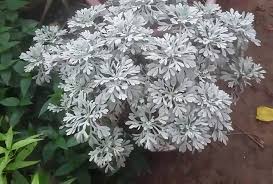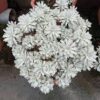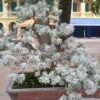The Relationship Between Royal Palaces and Feng Shui
Feng Shui, the ancient Chinese practice of harmonizing individuals with their surrounding environment, has influenced not only private homes but also some of the most significant and grand structures in history. Among these structures are the royal palaces, where emperors and their courts lived, ruled, and celebrated. The application of Feng Shui in the design, orientation, and structure of royal palaces is a reflection of the belief that the emperor, as the “Son of Heaven,” must rule over a harmonious and balanced environment to maintain peace, prosperity, and good fortune for the nation.
In this article, we will explore the deep relationship between royal palaces and Feng Shui, analyzing how the principles of this ancient practice influenced the construction and layout of some of China’s most iconic imperial residences. We will delve into the importance of harmony, the positioning of structures, and the symbolic use of Feng Shui in royal architecture.
1. Understanding Feng Shui in the Context of Royal Palaces
Feng Shui, translated as “wind and water,” is a practice deeply rooted in Taoist philosophy and focuses on the flow of “Qi” (energy) in a given space. In the context of royal palaces, the practice was not just about creating a comfortable environment; it was about aligning the physical and spiritual elements of the palace with the cosmic forces to ensure prosperity, health, and long-term success for the dynasty.
For Chinese emperors, the application of Feng Shui was of paramount importance. Their palaces had to be designed to bring positive energy and shield the emperor and his court from negative influences. A carefully balanced palace environment was believed to ensure the emperor’s well-being, which in turn would contribute to the stability and success of the empire.
2. The Forbidden City: A Masterpiece of Feng Shui
The Forbidden City in Beijing, one of the most iconic royal palaces in Chinese history, is a prime example of how Feng Shui was employed in imperial architecture. Built during the Ming Dynasty (1368–1644) and expanded during the Qing Dynasty (1644–1912), the Forbidden City was the home of 24 emperors and served as the administrative and ceremonial center of China for nearly 500 years.
Site Selection and Orientation: The Forbidden City is situated on a plot of land that was carefully chosen according to Feng Shui principles. The palace is positioned against the backdrop of the Jingshan Hill to the north, which represents a stabilizing force, providing the emperor with protection and ensuring the flow of good Qi. According to Feng Shui, the north represents stability, while the south is associated with prosperity. As a result, the Forbidden City is oriented to face south, ensuring that the emperor would be aligned with positive energies and the sun’s warmth.
The Symbolism of the Layout: The layout of the Forbidden City also follows strict Feng Shui guidelines. The palace is divided into two main sections: the Outer Court and the Inner Court. The Outer Court was where state affairs and official ceremonies were conducted, and it was designed to represent the emperor’s outward authority and power. The Inner Court, on the other hand, was the private residence of the emperor and his family, symbolizing inner harmony and peace.
The central axis of the Forbidden City is aligned perfectly with the cardinal directions, symbolizing the emperor’s central role in the universe. The north-to-south axis is also crucial for maintaining cosmic order, as it connects the emperor with the forces of nature. In traditional Chinese thought, the emperor was the mediator between heaven and earth, and this alignment reflected that role.
The Role of Water: Water plays an essential role in Feng Shui as it is believed to carry Qi and bring prosperity. In the Forbidden City, a large moat surrounds the palace complex, creating a boundary that protects the emperor and channels positive energy. The water also reflects the architecture of the palace, symbolizing harmony and balance.
3. The Summer Palace: Feng Shui for Leisure and Reflection
The Summer Palace, another significant royal palace in Beijing, was designed as a retreat for the emperor and his court. Originally built during the Qing Dynasty, it was expanded and renovated under Empress Dowager Cixi. While it was not a seat of government like the Forbidden City, the Summer Palace holds great importance in the context of Feng Shui, especially in its relationship to nature and the emperor’s personal well-being.
The Integration of Natural Elements: Unlike the more structured design of the Forbidden City, the Summer Palace incorporates nature into its design more freely. The palace is centered around Kunming Lake, which serves as a massive body of water that promotes the flow of positive energy. The lake’s design is symbolic of the traditional Feng Shui element of water, which is believed to attract wealth, success, and fertility.
The Long Corridor, a famous feature of the Summer Palace, is a covered walkway that connects various parts of the palace complex. It is adorned with over 14,000 paintings, many of which depict scenes of nature and history, reinforcing the idea that the palace is a harmonious blend of human endeavor and natural beauty.
Feng Shui of the Hill: Longevity Hill, another prominent feature of the Summer Palace, represents stability and protection in Feng Shui. It provides a sense of shelter for the palace complex and symbolizes the emperor’s connection to the earth and the natural world. According to Feng Shui principles, mountains are considered “dragon’s veins” that bring protection and vitality, while water nourishes and brings good fortune.
4. Symbolism of Colors and Numbers in Royal Palaces
Colors and numbers also played a significant role in Feng Shui when designing royal palaces. In the context of the Forbidden City, specific colors were used to represent different elements of life, prosperity, and protection. For example, yellow was the color of the emperor, and it was used for the roof tiles of the palace. In Feng Shui, yellow symbolizes wealth, power, and vitality. The use of red, another common color, symbolizes luck and protection from evil spirits.
Numbers also carried significant weight in the design of these royal palaces. The number nine, for instance, was a particularly auspicious number in Chinese culture. It is believed to represent eternity and longevity, which is why the number nine appears frequently in the architecture and layout of the Forbidden City. There are nine gates and nine dragon motifs in the palace, all symbolic of the emperor’s eternal reign and connection to heaven.
5. The Role of Feng Shui in the Design of Other Imperial Palaces
Beyond the Forbidden City and the Summer Palace, other imperial palaces in China were also designed with Feng Shui principles in mind.
For example, the Yuan Dynasty palace in Dadu (now Beijing) was built with an emphasis on Feng Shui. The palace was aligned with the cardinal directions, with a central axis running from north to south, symbolizing the emperor’s connection to the earth and the cosmos. The palace also featured large courtyards and water features that were believed to foster the flow of Qi.
Similarly, the Tang Dynasty imperial palace in Chang’an (modern Xi’an) was designed with Feng Shui in mind, incorporating elements such as the flow of water, the positioning of structures, and the relationship with surrounding mountains to ensure a harmonious environment for the emperor.
6. Feng Shui and the Protection of the Emperor
Feng Shui also played a role in protecting the emperor and his family from negative forces. The careful positioning of buildings and gates was meant to shield the royal family from harmful influences. In the Forbidden City, for example, the use of the northern mountains and the water moat acted as protective barriers, ensuring that no harmful Qi could enter the palace.
Additionally, the strategic use of gates and walls in royal palaces was designed to control the flow of energy. The number of gates and their positioning was meant to keep negative energy outside the palace while allowing positive energy to flow freely within the compound.
7. The Legacy of Feng Shui in Modern Royal Architecture
Although modern Chinese palaces no longer strictly adhere to the principles of Feng Shui, the influence of this ancient practice can still be seen in contemporary architecture. Many of the principles of Feng Shui that were once applied to royal palaces, such as the alignment with natural features, the use of color, and the emphasis on balance, continue to influence the design of both private homes and large-scale projects in China today.
Conclusion
The relationship between royal palaces and Feng Shui is a fascinating example of how ancient practices can be deeply embedded in the cultural and architectural fabric of a nation. From the Forbidden City to the Summer Palace, the design and layout of these imperial residences were influenced by Feng Shui principles to ensure harmony, prosperity, and the well-being of the emperor and the empire. The careful alignment of structures, the use of natural elements, and the symbolic incorporation of colors and numbers all played a significant role in the creation of these architectural masterpieces. Today, the legacy of Feng Shui in royal architecture continues to inspire designers and architects in China and around the world.


